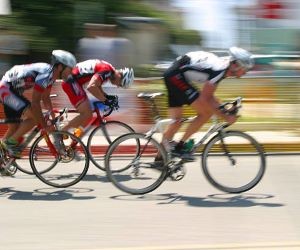Learn how to choose between clipless and flat pedals by comparing efficiency, control, comfort, and riding style to find the right setup for your needs.
HOW TO BET ON CYCLING CHAMPIONSHIPS
Betting on cycling championships is more than just picking a favorite rider. With the right mix of analysis, risk management, and course knowledge, this sport can become a profitable arena for sports bettors. This guide walks you through the most common bet types, the real performance factors, and actionable tips to interpret both individual and team performance in races like the Tour de France, Giro d’Italia, or Vuelta a España. Whether you're a beginner or looking to upgrade your betting game, you'll find valuable, practical insights here.

Understanding the basics of competitive cycling
Before placing any bets, it's essential to understand how cycling championships work. Unlike other sports, cycling blends team tactics, individual performance, and external elements like weather and terrain. Key competitions include Grand Tours (Tour de France, Giro d’Italia, Vuelta a España), UCI World Championships, and one-day classics like Paris-Roubaix or Liège–Bastogne–Liège.
Race types that affect betting
Each type of race has unique dynamics that affect rider performance:
Grand Tours: Stage races that require endurance, consistency, and strong team support.
One-day classics: Intense races decided within a single day of explosive action.
Time trials: Individual or team events that reward power and aerodynamics.
World Championships: National teams compete without their usual pro-team backing.
Favorites change depending on the race type. For instance, Tadej Pogačar dominates stage races, while Mathieu van der Poel is deadly in one-day classics. Knowing these nuances helps you spot value bets.
Factors that impact performance
Cycling performance depends on many factors: current form, race calendar, injuries, weather, elevation profile, and team dynamics. Some stages are built for climbers, others for sprinters or time trial specialists. Carefully analyzing the course and rider profile is key to more accurate predictions.
Types of cycling bets
Cycling offers a wide range of betting markets beyond just picking the overall winner. Knowing these options helps you diversify your strategy and manage risk effectively.
Main available betting markets
Stage winner: Bet on who will win a specific stage. Ideal if you understand the course profile.
General classification winner: Betting on who will win the entire race or tour. Higher payout, but more uncertainty.
Secondary classifications: Includes mountain, points, best young rider, or best team. Great for targeting overlooked niches.
Head-to-head: Bet on which of two riders finishes higher. Useful if you track individual performance closely.
Top 3 / Top 10: More conservative bet that pays if your rider finishes among the top. Ideal for lower volatility.
How to read odds and find value
Cycling odds can be highly volatile. They often reflect a rider’s popularity more than their actual winning chances. Comparing odds between bookmakers, spotting overrated picks, and tracking last-minute updates are key to finding value.
Use tools like implied probabilities, performance stats, course analysis, and weather forecasts to back up your decisions. In multi-day races, you can also adjust your bets as the general classification shifts.
Live betting: real-time strategy
Thanks to tech, many sportsbooks now offer live betting. This creates windows of opportunity for those watching closely. Crashes, punctures, or tactical changes can tilt the odds—if you react fast enough.
Use official live-tracking apps and expert commentary to stay ahead of the market when betting in real time.
Key strategies for smarter betting
Winning in cycling betting takes more than luck. You need strategy, data, and discipline. Below are real tactics to boost profits and dodge common traps.
Bankroll management and pre-race research
Never stake more than 1–2% of your bankroll per bet. Solid bankroll control is key to surviving the natural volatility of cycling. Also, do your homework: examine terrain profiles, weather forecasts, team statements, and physical condition reports.
Set a fixed stake based on your confidence level.
Use spreadsheets to track results and optimize your strategy.
Avoid impulse bets or getting lured by long odds alone.
Consider the rider’s tactical role within their team.
Follow specialist media like CyclingNews, ProCyclingStats, and official team channels.
When to bet early vs. waiting
Not all bets need to be placed before the event starts. In Grand Tours, valuable opportunities often appear mid-race as form becomes clearer. Betting too early can expose you to early crashes or withdrawals.
On mountain stages, track team behavior the day before. In classics, watch the weather—it can drastically shift race dynamics. Timing is a strategic weapon to exploit mispriced markets.
Learn from history and adapt
Studying past results, spotting performance trends, and learning from your mistakes are crucial to growing as a bettor. Track your wins and losses, identify weak spots, and tweak your approach accordingly. Bet like a trader—with cold logic and data-driven insights.
Using AI tools, predictive models, or alert services can give you an edge over casual bettors. But remember: cycling is unpredictable, and part of the game is managing that chaos smartly.
YOU MAY ALSO BE INTERESTED






